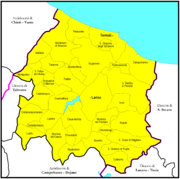
The Archdiocese of Capua is a Latin diocese of the Catholic Church in Capua, in Campania, Italy, but its archbishop no longer holds metropolitan rank and has no ecclesiastical province. Since 1979, it is a suffragan of the Archdiocese of Napoli, i.e. no longer has its own ecclesiastical province nor metropolitan status.

The Archdiocese of Benevento is a Latin archdiocese of the Catholic Church. It currently has five suffragan dioceses: the diocese of Ariano Irpino-Lacedonia, the diocese of Avellino, the diocese of Cerreto Sannita-Telese-Sant'Agata de' Goti, the Territorial Abbey of Montevergine, and the archdiocese of Sant'Angelo dei Lombardi-Conza-Nusco-Bisaccia.

The Roman Catholic Diocese of Ferentino existed until 1986, when it was united into the new diocese of Frosinone-Veroli-Ferentino.

The Diocese of Orvieto-Todi is a Latin Church ecclesiastical territory or diocese of the Catholic Church in central Italy. It was created in 1986 when the historical Diocese of Orvieto was united to the Diocese of Todi. The Diocese of Orvieto-Todi is immediately exempt to the Holy See and not part of any ecclesiastical province.

The Archdiocese of Pescara-Penne is a Latin diocese of the Catholic Church on the east coast in central Italy.

The Archdiocese of Chieti-Vasto is a Latin Church diocese of the Catholic Church which received that name in 1986, when the two separate dioceses, which had been governed by one and the same bishop, were united in one diocese. The diocese of Chieti had become the Archdiocese of Chieti in 1526, when promoted by Pope Clement VII. Chieti is about 8 miles (14 km) south-west of the Adriatic port city of Pescara.
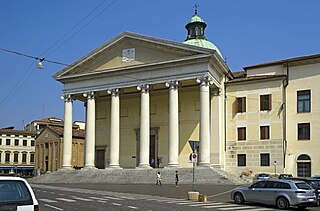
The Diocese of Treviso is Latin Church ecclesiastical territory or diocese of the Catholic Church in the Veneto, Italy. It is a suffragan diocese in the ecclesiastical province of the metropolitan Patriarchate of Venice.
The Catholic diocese of Sarsina was a Roman Catholic ecclesiastical territory in Emilia-Romagna, northern Italy, seated in Sarsina, in the province of Forlì, some 32 km south-southwest of Cesena. The diocese was founded in the 5th century, and was suffragan (subordinate) to the archbishop of Ravenna. The diocese existed until 1986, when it was united with the diocese of Cesena.

The Catholic diocese of Larino is located in the province of Campobasso, Southern Italy, c. 18 mi. south of Termoli. It existed from the 7th century until 1986. In that year it was united into the diocese of Termoli-Larino. It was a suffragan of the archdiocese of Benevento.

The Diocese of San Severo is a Latin diocese of the Catholic Church in Apulia. It is a suffragan of the Archdiocese of Foggia-Bovino.
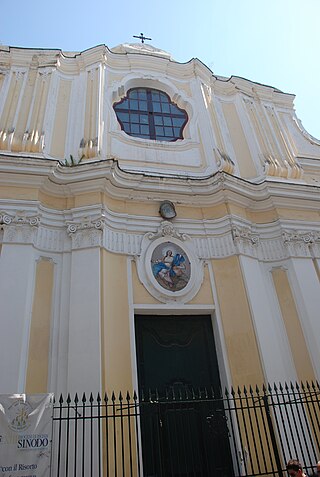
The Diocese of Ischia is a Latin diocese of the Catholic Church in Campania, southern Italy. It is a suffragan of the Archdiocese of Naples. The diocese comprises the entire island of Ischia, which contains seven communes divided into two circumscriptions. In 1743, the population was about 4,000. The city of Ischia constituted one single parish, with two religious houses of men and one of women. In 2018, the population of the town of Ischia was 20,118.
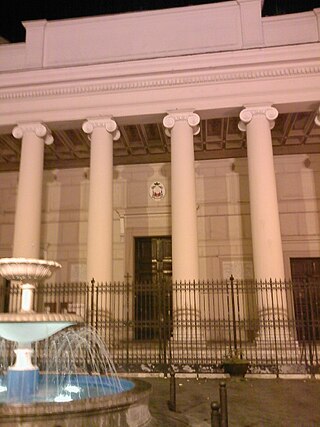
The Diocese of Acerra is a Latin diocese of the Catholic Church in Campania, southern Italy, eight miles east of Naples, in the area once called Terra Laboris (Liburia). It has existed since the 11th century. It is a suffragan of the Archdiocese of Naples.

The Diocese of Sessa Aurunca is a Latin diocese of the Catholic Church in southern Italy. Since 1979 it has been a suffragan of the Archdiocese of Naples.
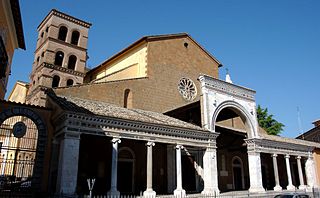
The Diocese of Civita Castellana is a Latin Church ecclesiastical territory or diocese of the Catholic Church in Latium, central Italy. It has existed in the current form since 1986, when the Diocese of Nepi e Sutri was united into the Diocese of Civita Castellana, Orte e Gallese. The Diocese of Gallese had been added to the Dioceses of Civita Castellana and Orte in 1805. The name of the diocese was shortened in 1991, in accordance with Vatican policies. The diocese of Civita Castellana is immediately exempt to the Holy See.

The Diocese of San Benedetto del Tronto-Ripatransone-Montalto is a Latin diocese of the Catholic Church in the Marche. It has existed in its current form since 1986. In that year the Diocese of Montalto was united into the Diocese of Ripatransone-San Benedetto del Tronto, which was the renamed historical Diocese of Ripatransone. The Roman Catholic Diocese of San Benedetto del Tronto-Ripatransone-Montalto has been a suffragan see of the Roman Catholic Archdiocese of Fermo since 1680.
The Italian Catholic diocese of Lacedonia, a suffragan of the archdiocese of Benevento in Campania, existed until 1986 when incorporated into the reorganized Roman Catholic Diocese of Ariano Irpino-Lacedonia.

The Diocese of Bisceglie was a Roman Catholic diocese located in the town of Bisceglie on the Adriatic Sea in the province of Barletta-Andria-Trani, Apulia in southern Italy. It is five miles south of Trani.
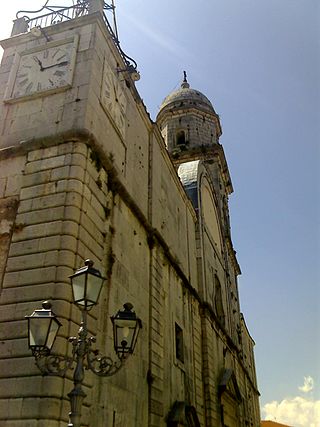
Diocese of Nusco was a Roman Catholic ecclesiastical territory in Campania, southern Italy, and was a suffragan of the archdiocese of Salerno. In 1986 the diocese was suppressed, and its territory was united with the archdiocese of Conza-Sant'Angelo dei Lombardi-Bisaccia, to form the Archdiocese of Conza-Sant'Angelo dei Lombardi-Nusco-Bisaccia.

The Diocese of Guardialfiera or Diocese of Guardia was a Roman Catholic diocese in Italy. The diocese was established in the second half of the 11th century, with seat of the diocese was located in the city of Guardialfiera in the Province of Campobasso in the region of Molise. In 1818, the diocese was suppressed, and its ecclesiastical territory was assigned to the Diocese of Termoli.
The Roman Catholic Diocese of Pedena was a Catholic diocese located in the town of Pedena in the central part of Istria, Croatia, 12 km southeast of Pazin. Pedena is now the name of a Latin titular see.



